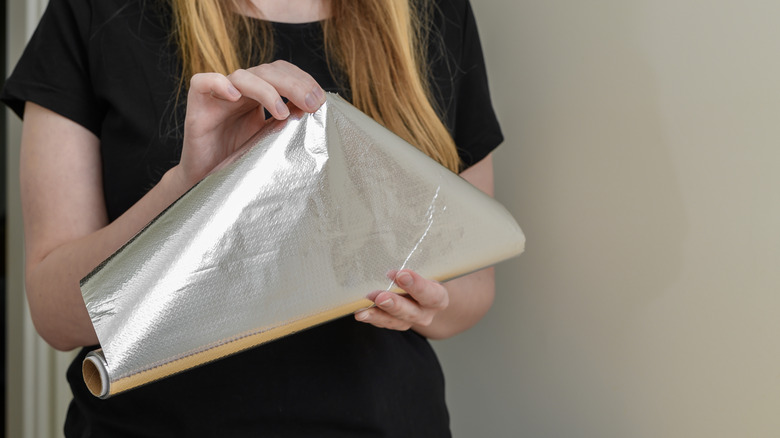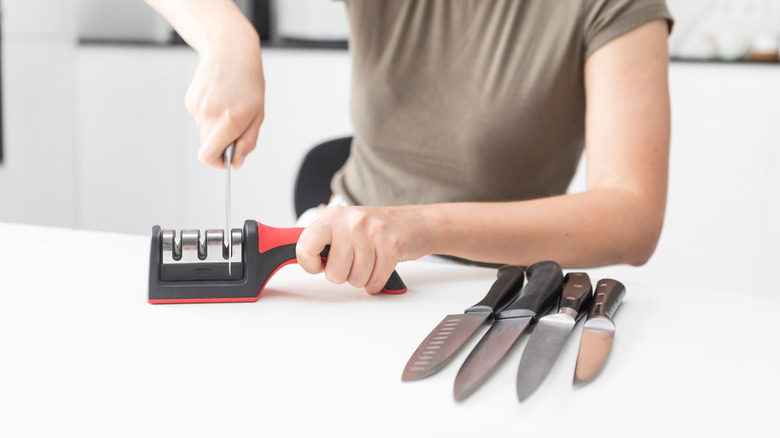Wait, Can You Really Sharpen Kitchen Scissors With Aluminum Foil?
Trying to use a set of dull kitchen scissors can be awful, as you never truly realize how useful scissors are until you're trying to use a set that doesn't work. When your scissors grow dull, the best course of action is naturally to sharpen them. There are plenty of tools designed for sharpening blades like knives and scissors, but scissors may prove tricky. One hack proposes using a material you likely already have in your home, so you don't have to spend money on additional tools.
Supposedly, aluminum foil can be used to sharpen your scissors. Here's how it can work: take a sheet of aluminum foil 12 inches long and fold it until it's about six layers thick. Then, use your dull scissors to cut that foil into 10 or 12 strips, fully closing the scissors on each cut. When you finish, the scissors should be capable of cutting quickly and easily. If not, cut more aluminum foil until they reach that state.
So, does this sharpen your scissors? Not quite. Technically speaking, it hones them. Honing is when you realign and straighten the edge of a blade, which naturally rounds off and dulls over time. Actual sharpening involves removing minuscule amounts of metal from the blade to restore the edge. Honing is really only effective for slightly dull blades and won't work on damaged or very dull ones. And aluminum foil isn't even a very good honing method. You're better off using the honing rod from a knife set than wasting all that foil.
Better ways to sharpen your kitchen scissors
So, if aluminum foil isn't an effective scissor-sharpening method, what is? The best tool for sharpening your scissors is one specifically made for the task. This means you should use either a dedicated scissor sharpener or a knife sharpener if you have one and don't want to buy an additional tool. After all, you likely won't need to sharpen your scissors as often as you sharpen your kitchen knives.
Another great option for sharpening your scissors is a whetstone. Whetstones can be used to sharpen most any blade as long as you know how to use the whetstone safely. Submerge the stones in water for about 45 minutes before sharpening to lubricate the surface, and remember to work with the natural angle of the knife edges. Start at the end of the blade closest to the handle and maintain contact with the edge as you run the stone up to the tip (a 15- to 20-degree angle is ideal for most knives, though scissors may require a different angle, so take a close look at the cutting edge). Repeat until you get a burr, a very small edge of metal that resembles the white of a fingernail.
Of course, the best way to keep your scissors sharp is to not let them get dull in the first place. While it will inevitably happen over time, you can slow down the process with proper maintenance. Always clean your scissors after cutting anything that might get them dirty, and promptly dry them whenever they get wet to prevent rust and dulling.

